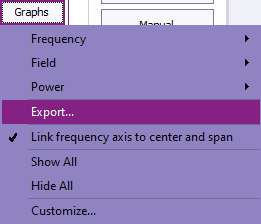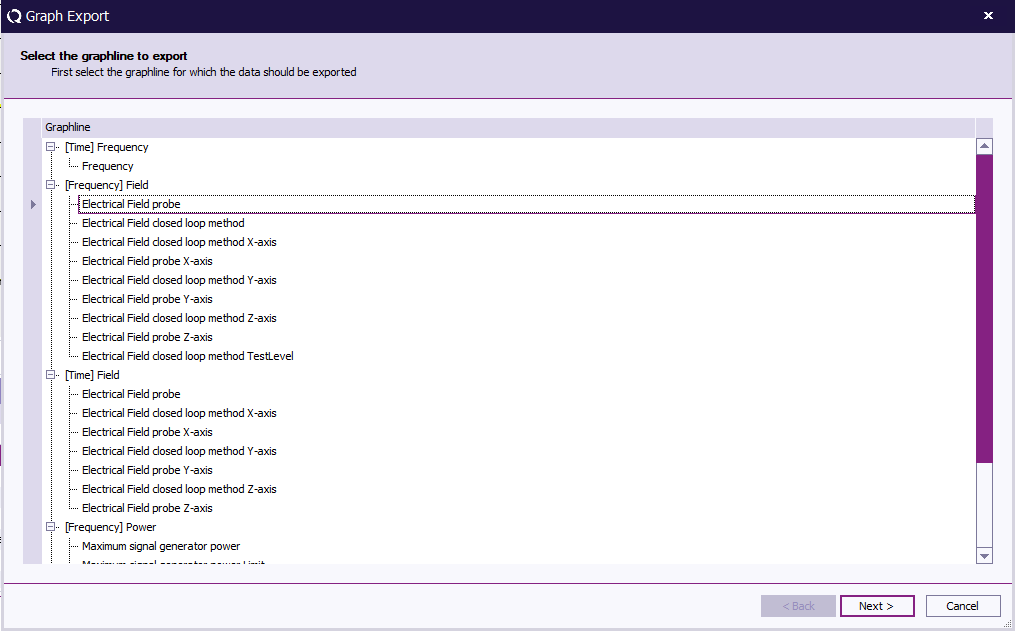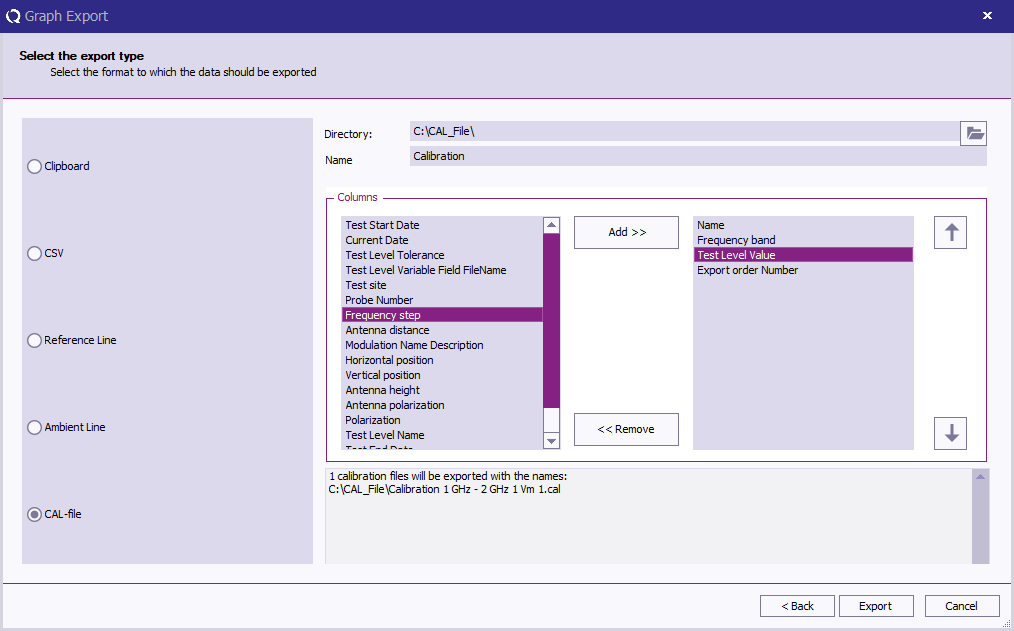Difference between revisions of "RadiMation Application Note 151"
(→Export configuration) |
|||
| Line 15: | Line 15: | ||
* '''2. Select export''' | * '''2. Select export''' | ||
| + | |||
| + | [[File:SelectExport.png]] | ||
* '''3. Select the graph name that should be exported. And in this specific case, select a frequency-indexed field strength graph. (And click on 'Next')''' | * '''3. Select the graph name that should be exported. And in this specific case, select a frequency-indexed field strength graph. (And click on 'Next')''' | ||
| + | |||
| + | [[File:SelectExportGraph.png]] | ||
* '''4. Select the 'CAL-File' option''' | * '''4. Select the 'CAL-File' option''' | ||
Latest revision as of 13:30, 4 March 2024
How to use the graph exporter to export measurement data into calibration files
Introduction
In RadiMation® it is possible to perform automatic calibration of the Uniform Field Area (UFA). This application note outlines how RadiMation® can be used to allow seamless generation of individual calibration files, facilitating subsequent analysis and calculations.
Exporting calibration files
RadiMation® provides a convenient export feature to generate individual calibration (.CAL) files for all the field strength graphs obtained during the test. Once an electrical field closed loop test is completed, the relationship between the generated power and the achieved electrical field strength can be exported as a .CAL file. This exported .CAL file can be utilized in other electrical field substitution tests or the Uniform Field Area calculation.
Export configuration
To open the calibration file exporter first open a test result file and follow the steps mentioned below
- 1. Use the graphs button above the graph
- 2. Select export
- 3. Select the graph name that should be exported. And in this specific case, select a frequency-indexed field strength graph. (And click on 'Next')
- 4. Select the 'CAL-File' option
The export configuration dialog in RadiMation offers controls to customize the calibration file names for efficient organization.
Key functionalities include:
- Selecting the directory for exporting calibration files.
- Specifying a custom identification through a text box for naming the files.
- Including report generator codes in the name to build the final calibration filename.
- Interchanging different variables between the "available" and "use" lists for flexible file naming.
- Moving variables up and down in the "use" list to determine their order in the filename.
- Building the final filename using the selected directory and variables with proper spacing and unit representation.
- Ensuring unique filenames through validation checks.
- Displaying the amount and full path names of the to-be-exported calibration files for review.
- Storing export settings in the global RadiMation configuration directory for future use.
Conclusion
The integration of an electric field probe positioner and enhanced export capabilities in RadiMation empowers users to automate the calibration of the Uniform Field Area. Using the graph export, facilitates the creation of individual calibration files, which can be fed into the existing UFA calculation or substitution tests within RadiMation®. These advancements enhance the accuracy and convenience of radiated immunity testing, streamlining the EMC testing workflow.


